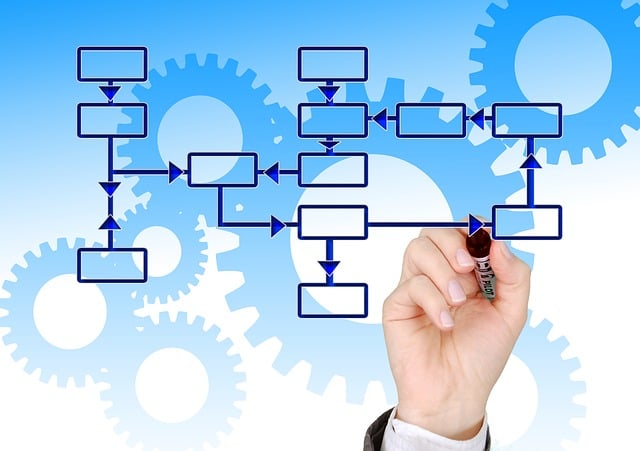Factory floor optimization through 5S training and lean management is a strategic approach that transforms workplaces into efficient, organized systems. Rooted in Japanese manufacturing, 5S (Sort, Set in Order, Shine, Standardize, Sustain) emphasizes workflow optimization, process standardization, and continuous improvement. By implementing these principles, businesses can streamline production, reduce waste, enhance productivity, drive down costs, and boost employee satisfaction through quantifiable metrics like efficiency ratios, inventory turnover rates, and defect rates.
Factory floor optimization is a comprehensive approach that transforms manufacturing spaces into efficient, well-organized environments. This article delves into essential strategies for enhancing productivity and quality. We explore ‘Understanding Factory Floor Optimization’, the power of 5S training in fostering workplace organization and continuous improvement, and its synergy with Lean management techniques for streamlined processes. Additionally, we highlight process standardization as a cornerstone for consistent production and provide metrics to measure optimization success.
- Understanding Factory Floor Optimization: A Comprehensive Approach
- The Role of 5S Training in Workplace Organization and Continuous Improvement
- Lean Management Techniques for Streamlining Processes on the Factory Floor
- Standardization: Key to Efficient and Consistent Production
- Measuring Success: Metrics for Evaluating Factory Floor Optimization Efforts
Understanding Factory Floor Optimization: A Comprehensive Approach

Factory floor optimization goes beyond surface-level cleaning and arrangement. It’s a comprehensive approach that leverages techniques like 5S training and lean management to transform the workplace. 5S, a methodology rooted in Japanese manufacturing, emphasizes sorting, setting in order, shining (cleaning), standardizing, and sustaining – creating an organized, efficient space that promotes continuous improvement.
This involves not just arranging tools and machinery for quick access but also process standardization, where every step in production is meticulously analyzed and refined. By implementing these practices, organizations can eliminate waste, streamline workflows, and enhance overall productivity, ultimately leading to improved quality, reduced costs, and increased employee satisfaction.
The Role of 5S Training in Workplace Organization and Continuous Improvement

The Role of 5S Training in Workplace Organization and Continuous Improvement
In today’s competitive business landscape, efficient factory floor operations are paramount to success. Among various lean management strategies, 5S training stands out as a powerful tool for enhancing workplace organization and driving continuous improvement. 5S—a methodology that originated in Japan—encompasses five principles: Sort, Set in Order, Shine (Clean), Standardize, and Sustain. By implementing these principles through comprehensive training, manufacturers can transform their facilities into highly organized, streamlined environments.
Sort involves eliminating unnecessary items from the workspace, ensuring only essential tools and materials are present. Set in Order establishes a logical layout for efficient workflow, while Shine (Clean) emphasizes regular cleaning to maintain a contaminant-free zone. Standardize focuses on process standardization, ensuring everyone follows the same procedures. Sustain promotes ongoing adherence to these practices through leadership commitment and employee involvement. Together, these principles create an environment conducive to continuous improvement, where efficiency, quality, and safety flourish.
Lean Management Techniques for Streamlining Processes on the Factory Floor

Lean Management Techniques for Streamlining Processes on the Factory Floor involve implementing fundamental principles aimed at eliminating waste and enhancing efficiency. One powerful method is 5S training, a systematic approach that promotes workplace organization. This technique involves sorting (Seiri), setting in order (Seiton), shining (Seiso), standardizing (Seiketsu), and sustaining (Shitsuke) to create an environment conducive to continuous improvement. By teaching employees these practices, factories can achieve better workflow efficiency, reduced downtime, and improved quality control.
Process standardization is another key lean management tool. This involves breaking down complex tasks into simpler, step-by-step procedures, often supported by visual aids like flowcharts. Such standardization ensures that operations are repeatable and consistent, minimizing errors and maximizing productivity. Regular reviews and updates to these processes are crucial for maintaining their effectiveness as the factory floor evolves.
Standardization: Key to Efficient and Consistent Production

Standardization is a cornerstone in achieving efficient and consistent production on the factory floor. Implementing 5S training principles—Sort, Set in Order, Shine (Clean), Standardize, and Sustain—is a powerful way to transform workspaces into organized, streamlined environments. This systematic approach to workplace organization, often coupled with lean management techniques, ensures that tasks are performed consistently, reducing waste and improving productivity.
Process standardization further enhances these benefits by defining clear steps for every operation, making it easier for workers to follow proven procedures. Such standardization not only maintains consistency but also fosters a culture of continuous improvement where employees actively participate in identifying and eliminating inefficiencies, driving ongoing enhancements that benefit the entire production process.
Measuring Success: Metrics for Evaluating Factory Floor Optimization Efforts

Measuring Success is a critical aspect of Factory Floor Optimization, as it allows for evaluating the effectiveness of implemented strategies and identifying areas that still need improvement. Key metrics include efficiency ratios, such as cycle times and changeover rates, which indicate how quickly production lines can switch between products or addresses bottlenecks.
Additionally, workplace organization through 5S training and lean management principles should be quantifiable. Metrics like inventory turnover rates, floor space utilization, and the number of errors or defects per shift can showcase improvements in process standardization. The continuous improvement aspect of 5S is best measured over time through trends in these metrics, showing whether optimization efforts are leading to sustained gains in productivity and workplace efficiency.
Factory floor optimization is a holistic process that combines structured workplace organization through 5S training, lean management techniques for streamlined processes, and standardization to enhance efficiency. By implementing these strategies, manufacturers can achieve significant improvements in production output, reduce waste, and foster a culture of continuous improvement. Measuring success through relevant metrics ensures that optimization efforts remain on track, allowing businesses to stay competitive in today’s market.
